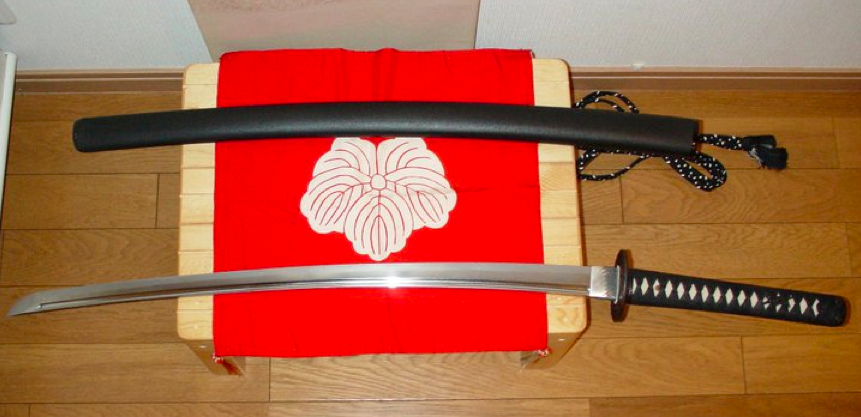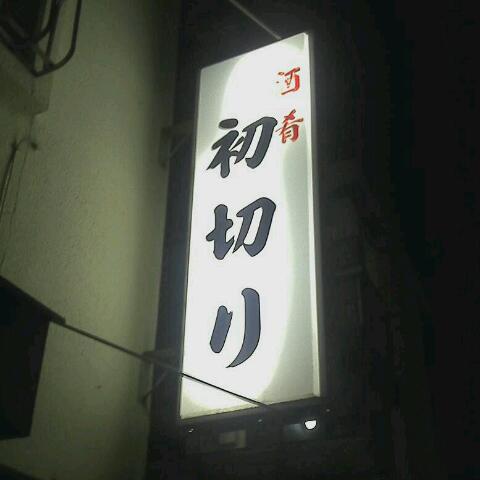18. The "Sword" Radical: 刀, 刂, and 刁
You might not think it would be easy to have a sword escape notice, but it does happen. Some of the most common kanji contain a full sword, 刀 (a radical known as かたな), or its sliver of a variant,刂 (called りっとう). By the way, 刁 is also supposed to be a variant of 刀. However, as far as I can tell, the radical 刁 appears only in the non-Joyo kanji 刁 (チョウ: crafty, cunning), so let's ignore this second variant.
Swords That One Easily Overlooks in Kanji
Even though 刀 and 刂 pop up in so many characters, these shapes rarely announce themselves as swords. Take, for instance, these kanji, each of which has a dominant 刀:
切 (156: to cut)
分 (199: to divide; part; minute)
初 (507: first; beginning)
Although 切 and 分 respectively contain seven (七) and eight (八) swords, I still somehow tend to overlook them! (Actually, the 八 in 分 means "to split," not "eight." But the 七 in 切 really does mean "seven"!)
And then there are these two ultra-common kanji:
前 (159: before)
別 (579: separate; another)
Do these characters ever make you think of a sword? In both cases, the etymology is convoluted; the one for 前 involves making progress with a cutting tool, whereas the sword in 別 cuts through a bone, which leads to a chain of extended meanings.
Even if the back stories made perfect sense to me, I still wouldn't or couldn't see the swords in these characters. They're so commonplace that I can't help viewing them holistically. When I started learning kanji and spent oodles of time on component analysis, I most likely noticed the weaponry on display. Now, though, it takes me by surprise.

Photo Credit: Kenji Ishihara
Of course, there are cases in which the 刂 is simply a miscopying or simplification of another shape and has nothing whatever to do with a sword. That's true in these kanji:
帰 (96: to return)
到 (1641: to arrive; attain; reach; extreme; prevail)
倒 (1643: to topple, fall, collapse)
At other times, the characters are so obviously related to swords or knives that when I gaze at the shape, I do catch the glint of a blade:
刀 (181: knife, sword; single-edged sword)
刈 (1092: to clip)
剣 (1214: sword; double-edged sword)
刃 (1446: blade)
Etymology of Kanji with Swords
On many occasions, spotting a sword makes my head spin with questions about the etymology. Because so many characters have swords in their hilts (so to speak), I can't present all of their etymologies here, but here are several (all from Henshall):
列 (414: row, line)
This combination of "denuded bone" and "to cut" originally referred to butchery.
利 (596: advantage; profit)
Reaping a harvest led to profit. Incidentally, this kanji can mean "sharp," either abstractly (e.g., a keen mind) or literally (as we'll see in a moment).
制 (722: system; control)
The left-hand side once looked different, representing a "many-branched tree." Thus, this character meant "to prune a tree," which is a way of "putting things in order" or "controlling" them. This extends, logically enough, to "system." Ah, a kanji about becoming organized! Be still my Virgo heart!
判 (769: to judge)
Half (半) a sword? No, this kanji is about cutting something in two, which is to say "dissect." That later expanded to mean "analyze, judge."
刑 (1193: penalty, punishment)
"Punishment" conjures up images of the harshest possible sentence, and I'm afraid to find out if 刑 has anything to do with beheading, but ... Yes, it does! Eek! Henshall says this kanji initially meant "to injure someone with a sword," evolving to mean "cutting with a sword by way of punishment." Then the general definition of "punishment" replaced the sword-specific ones. Whew.
Japanese Words with Multiple Swords
With swords popping up all over the place, I can't help wondering if any Japanese words contain two swords. I found one with three!
剪刀 (はさみ or せんとう: scissors) to cut + knife
People usually write this word in hiragana. The first kanji is non-Joyo.

Photo Credit: Lutlam
A word with two instances of 刀! The term 初切り (しょっきり), also written as 初っ切り, 初っ切, or 初切, refers to a comical sumo performance before sumo matches. The comedy routine shows you what one is not supposed to do in sumo.
As for other s(words)—that is, words with multiple swords!—I've dug up these:
剃刀 (かみそり: razor) to shave + knife
The first kanji in this common word is non-Joyo.
刀剣 (とうけん: sword, dagger, knife) single-edged sword + double-edged sword
This is a generic way of referring to a sword without specifying much about it, as explained in essay 1214 (剣).
刀刃 (とうじん: sword blade) sword + blade
Amazing-looking word, isn't it?
剣劇 (けんげき: sword play; samurai drama) sword + drama
This word also appears in essay 1214 on 剣.
刺刀 (さすが: dagger) to stab + sword
This is an archaic word.
利刀 (りとう: sharp sword) sharp + sword
This list is by no means exhaustive, but even from this small sample, I conclude that when a word contains two swords, the cutting or stabbing agenda becomes much more obvious. The sword comes out of the hilt, and the "games" begin.
